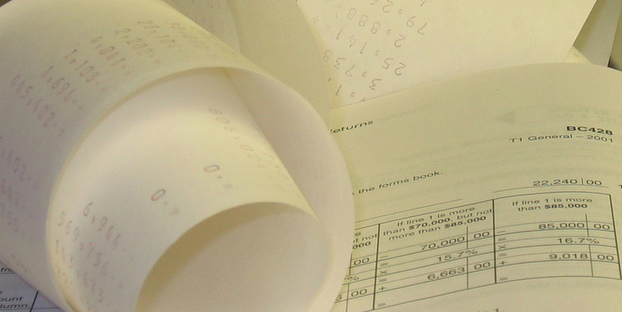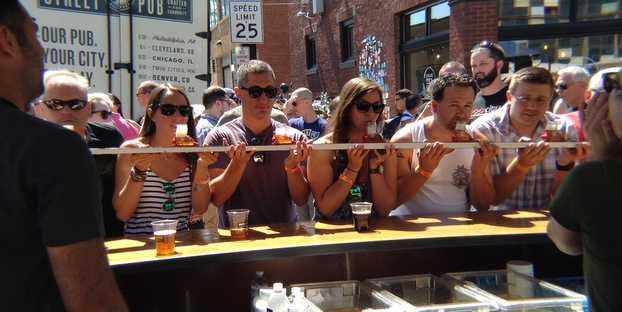
With all the curiosity around Cost of Goods Sold (COGS), why isn’t there a clear and easy answer on how to calculate it? Software companies advertise the calculation as a major feature of their products and CPAs run fast from an explanation. No matter the size of the brewery, it is always the first question I get. So, what is going on?
What if I told you a true COGS analysis is not available for your brewery. Better yet, what if I told you COGS is probably the wrong calculation for your brewery until you hit 50,000 bbls in production.
Interested? I spent eight months last year diving deep into the options surrounding COGS and how to make it work for smaller breweries. The results will be released in a two-part series on Craft Brewing Business. This first post will define and explain the components and challenges in calculating COGS. The second post will share alternatives to the traditional calculation. These alternatives are meant to make sense to the brewery owner and guide intelligent growth.
I want to be crystal clear: I am not challenging the COGS calculation that has been used for many decades by many industries. My goal with this series is to explain the concepts, share my experience and suggest alternatives. Let’s begin with a definition.
What is COGS?
COGS is a measurement of the direct cost attributable to the production of goods by a company. Typically, it is broken down into three categories: Direct Materials, Direct Labor and Direct Overhead. Direct Materials are the raw ingredients that are assembled into the finished product. Direct Labor is the man hours it took to complete the product. Direct Overhead is the ancillary items that helped with the production (utilities, rent, maintenance, materials, depreciation).
RELATED: Four reasons why brewers should build a budget
Once you nail down the components of the calculation, you need to choose a method of calculating them. Popular methods include Activity Based Costing, Variable Costing, FIFO and LIFO. The method that most closely relates to the brewing process is Activity Based Costing (ABC). ABC examines the activities in the brewing process to establish rates. We will re-visit ABC in a bit.
Direct Materials
Direct Materials are your ingredients that make up the assembly that converts into the finished product. It is necessary to break down the materials that go into a batch by unit and cost. To do this, list out the quantities of ingredients per recipe and calculate the unit cost per item. This is typically done with either: 1) brewery management software; or 2) Excel. The results should yield an accurate materials cost for a particular batch of beer. Next, add your packaging costs to determine the full cost of materials.
Direct Labor
Direct Labor is the man-hours cost associated with the production of beer. Since we are choosing ABC as a method of calculation, we must analyze each activity. To do this, we breakdown the brewing process into three stages: wort production, cellaring and packaging. So, everything that happens in the brewhouse must fit into one of these categories. Next, each employee will need to keep a detailed time sheet as to the activity they perform. The timesheet should include: batch number, beer name, activity and time. The timesheet information will allow us to assign rates to each activity for future analysis.
RELATED: How to avoid the most common MRP mistakes breweries make
Direct Overhead
Direct Overhead is the most misunderstood of all. Think of it this way: If it is a cost and it helps produce the finished good, and it is NOT direct materials or direct labor, it is overhead. This includes, utilities, rent, water, indirect materials and depreciation to name a few. Once we gather all our overhead cost, we need to assign them to an activity. Next, we need to determine rates per activity. The challenge with overhead rates is the costs vary and calculations must be relevant to that cost. Example, for utilities and water, proper sensors must be installed to capture the amount used per activity. Rent may be figured using a square foot percentage, but then must be allocated to an activity once the percentages are calculated.
Instead of going on and on about what the numbers mean and variances and calculations, I am going to cut to the chase. I believe breweries under 50,000 bbl in production per year do not need to worry about a detailed calculation. The cost/benefit analysis does not make sense. You would need a full time employee to maintain the continuous calculations. It is important to understand that COGS at this level is a dynamic. It is not done once a year; it is a continuous process. Why? Because you are analyzing the cost of an activity that constantly changes.
I want to apologize if I have crushed your dreams of running a full ABC analysis on your brewery. I have experienced, first hand, what happens when you try to run an ABC analysis on a brewery with weak processes and limited data. Can it be done? Sure. You would need the right person leading the charge and enough money to pay for it. In my next post, I will share with you what we have used to replace an ABC analysis. For breweries under 50,000 bbls in production, our process has brought clarity to profit and growth.
Now head on over to part 2!
Chris Farmand is the founder of Small Batch Standard, a CPA firm helping craft breweries across North America. Farmand has more than 10 years of tax and accounting experience, with the last five years dedicated to the craft brewing industry. Small Batch Standard believes brewery owners should have reliable financials while focusing on what they do best, making beer. He can be reached at [email protected].





I don’t do tax/acctng, but… >> Cost accounting hack for craft breweries under 50k bbls, part 1 https://t.co/08tOwjY5TL @CraftBrewingBiz
Mike Haack liked this on Facebook.
Cost Accounting Hack for Craft Breweries Under 50,000 Bbls, Part 1 https://t.co/4bp8KTgIxq #CraftBeer
Looking forward to part 2!
Ed McGrath liked this on Facebook.
William Lane liked this on Facebook.
Joshua Bennett liked this on Facebook.
Flashbacks to cost accounting in college
Jonathan Cahoon liked this on Facebook.
RT @cfarmand: Cost accounting hack for craft breweries under 50,000 bbls, part 1 https://t.co/yo03sgeYW9
Cost accounting hack for craft breweries under 50,000 bbls, part 1 https://t.co/rFUlAxlyVd
Joel Halbleib liked this on Facebook.
Alex Novicki liked this on Facebook.
Alx HB liked this on Facebook.
Jonathan Ayers liked this on Facebook.
Cost accounting hack for craft breweries under 50,000 bbls, part 1 https://t.co/SV1sdPQPXv via @craftbrewingbiz
Hurry with part 2!
Marilee Rutherford liked this on Facebook.
Jonathan Duke liked this on Facebook.
#CraftBeer #CraftBrewing #Beer #BeerBiz Cost accounting hack for craft breweries under 50,000 bbls, part 1 https://t.co/j758Yk8VHK
Cost accounting hack for craft breweries under 50,000 bbls, part 1 https://t.co/yo03sgeYW9
Nice article! And so many things to keep track of – utilities higher in the winter time – lower in the summer.. Cost of some ingredients typically a bit higher depending on time of season.. Using the right staff for the right job – is production scheduled to utilize staff properly – etc. Like you said – it can be a full time job!
Kevin Lewis liked this on Facebook.
Katie R. Stouffer liked this on Facebook.